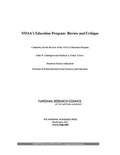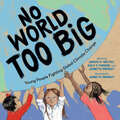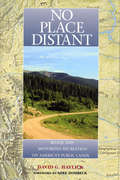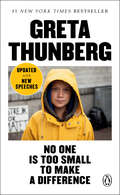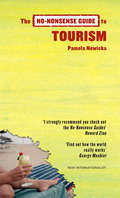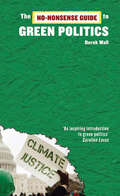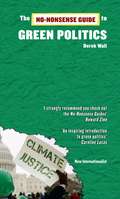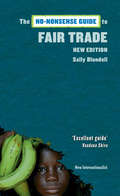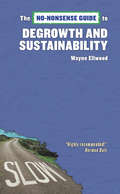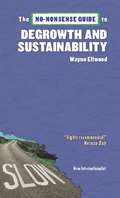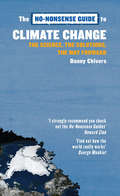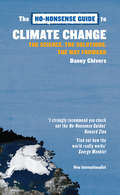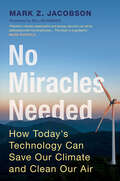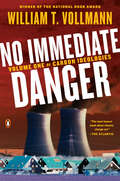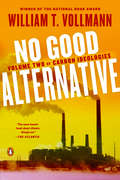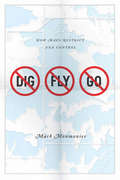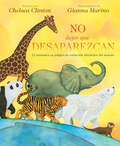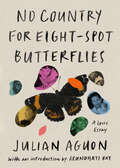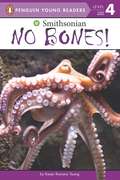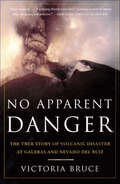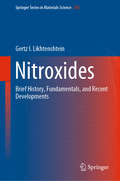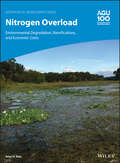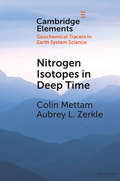- Table View
- List View
NOAA's Education Program: Review and Critique
by National Research Council of the National AcademiesThere is a national need to educate the public about the ocean, coastal resources, atmosphere and climate. The National Oceanic and Atmospheric Administration (NOAA), the agency responsible for understanding and predicting changes in the Earth's environment and conserving and managing coastal and marine resources to meet the nation's economic, social and environmental needs, has a broad mandate to engage and coordinate education initiatives on these topics. Since its creation in 1970, the NOAA has supported a variety of education projects that cover a range of topics related to the agency's scientific and stewardship mission. NOAA uses formal and informal learning environments to enhance understanding of science, technology, engineering and mathematics (STEM) and to advance environmental education. The work of this agency overlaps and compliments the missions of other federal agencies, institutions of higher education, private and nonprofit organizations. Coordination among these agencies and organizations has been challenging. Limited education resources and the inherently global nature of NOAA's mission make strategic partnerships critical in order for the agency to accomplish its goals. Additionally, clear education goals, planning, and strategic use of resources are critical aspects for effective partnerships. NOAA's Education Program: Review and Critique provides a summary of the national education context for NOAA's role in education which is twofold: first is to advance the environmental literacy of the nation, and second is to promote a diverse workforce in ocean, coastal, Great Lakes, atmospheric and climate sciences. The book also describes the strengths and weaknesses of the education strategic plan, the education evaluation approach of the agency and strategies for improving the evaluation process.
No World Too Big: Young People Fighting Global Climate Change
by Lindsay H. Metcalf Jeanette Bradley Keila V. DawsonFans of No Voice Too Small will be inspired by young climate activists who made an impact around climate change in their communities, countries, and beyond.Climate change impacts everyone, but the future belongs to young people. No World Too Big celebrates twelve young activists and three activist groups on front lines of the climate crisis who have planted trees in Uganda, protected water in Canada, reduced school-bus climate footprint in Indonesia, invented alternate power sources in Ohio, and more. Fourteen poems by Vanessa Brantley-Newton, David Bowles, Rajani LaRocca, Renée LaTulippe, Heidi E. Y. Stemple, and others honor activists from all over the world and the United States. Additional text goes into detail about each activist's life and how readers can get involved.
No Place Distant: Roads and Motorized Recreation on America's Public Lands
by Michael P. Dombeck David HavlickWhile many of the roads on public lands provide a great service with relatively little harm, others create significant problems -- from habitat fragmentation to noise pollution to increased animal mortality -- with little or no benefit.In No Place Distant, author David Havlick presents for the first time a comprehensive and in-depth examination of the more than 550,000 miles of roads that crisscross our national parks, national forests, Bureau of Land Management lands, and wildlife refuges, considering how they came to be; their ecological, financial, and societal costs; and what can be done to ensure that those roads are as environmentally benign and cost-effective as possible, while remaining functional and accessible. The book: places the profusion of roads on our public lands in historical context offers an overview of the ecological effects of roads explores the policies, politics, and economics that have fostered road-building on public lands considers the contentious topic of motorized recreation examines efforts to remove roads and restore degraded lands to healthBringing together an impressive range and depth of information along with a thoughtful analysis of the issues, No Place Distant offers a definitive look at the debate over roads on public lands. With its well-crafted prose and extensive documentation, it is an unparalleled resource for anyone concerned with the health or management of public lands in the United States.
No Ordinary Man: George Mercer Dawson 1849-1901
by Lois Winslow-Spragge Bradley LocknerGeorge Mercer Dawson was indeed no ordinary man. Born in 1849, son of the first Principal of McGill University, Dawson defied health circumstances that would have defeated many people and went on to become one of our most exceptional Canadians. As a geologist in the British North American Boundary Commission between Canada and the U.S.A. and as Director of the Geological Survey of Canada in 1895, Dawson examined and explored every aspect of Canada’s unknown territories. This collection of writings, letters, diaries and essays begins with the young George and moves through his developing years to his adult life. "He climbed, walked and rode on horseback over more of Canada than any other member of the Geological Survey of Canada at that time – yet to look at him, one would not think him capable of a day’s hard physical labour …. It was his hand that first traced upon vacant maps the geological formations of the Yukon and much of British Columbia."- Lois Winslow-Spragge". To read about him is like taking a drink of water from a cool, unpolluted spring. His sense of values was so great that he once said he didn’t care much for money or possessions. All he wanted was what he could hold in his canoe."- Anne Byers, Ottawa
No One Is Too Small to Make a Difference: Expanded Edition
by Greta ThunbergThe groundbreaking speeches of Greta Thunberg, the young climate activist who has become the voice of a generation, including her historic address to the United Nations <P><P>In August 2018 a fifteen-year-old Swedish girl, Greta Thunberg, decided not to go to school one day in order to protest the climate crisis. Her actions sparked a global movement, inspiring millions of students to go on strike for our planet, forcing governments to listen, and earning her a Nobel Peace Prize nomination. <P><P>No One Is Too Small to Make A Difference brings you Greta in her own words, for the first time. Collecting her speeches that have made history across the globe, from the United Nations to Capitol Hill and mass street protests, her book is a rallying cry for why we must all wake up and fight to protect the living planet, no matter how powerless we feel. Our future depends upon it.
The No-Nonsense Guide to Tourism
by Pamela NowickaThis guide demystifies the often invisible impacts of global tourism, one of the biggest industries in the world, from labor conditions to development by stealth, to the role of elites and the cultural impacts on both the visitor and the visited.It also takes in themes such as the gap year and the role of travel and vacations in Western cultures, and examines the "happy smiling faces" syndrome and asks whether this is just a reworking of old colonial relationships. Pamela Nowicka is a journalist and consultant writing on numerous tourism and ethics subjects.
No-Nonsense Guide to Green Politics (No-Nonsense Guides #13)
by Derek WallClimate chaos and pollution, deforestation and consumerism: the crisis facing human civilization is clear enough. But the response of politicians has been cowardly and inadequate, while environmental activists have tended to favour single-issue campaigns rather than electoral politics. The No-Nonsense Guide to Green Politics measures the rising tide of eco-activism and awareness and explains why this event heralds a new political era worldwide: in the near futurethere will be no other politics but green politics.
The No-Nonsense Guide to Green Politics
by Derek WallClimate chaos and pollution, deforestation and consumerism: the crisis facing human civilization is clear enough. But the response of politicians to it has been cowardly and inadequate, while environmental activists have tended to favor single-issue campaigns rather than electoral politics.The No-Nonsense Guide to Green Politics measures the rising tide of eco-activism and awareness and explains why it heralds a new political era worldwide.Derek Wall is a former principal speaker of the British Green Party. He is the author of numerous books, including Babylon and Beyond: The Economics of Anti-Capitalist, Anti-Globalist and Radical Green Movements.
The No-Nonsense Guide to Fair Trade
by Sally BlundellAn in-depth look at two decades of a movement that aims to challenge the ethical foundations of the global market.Transnational corporations look for the cheapest suppliers, while the fair trade movement insists on a premium for the producers at the start of the chain.Sally Blundell uncovers the origins of fair trade and what it is likely to become.
No-Nonsense Guide to Degrowth and Sustainability
by Wayne EllwoodThe world’s addiction to economic growth continues with barely any recognition that this is a problem. Indeed, in a Western world currently dominated by austerity measures and ducking in and out of recession, growth is seen even by progressives as the only possible solution for our economic and social woes. This No-Nonsense Guide looks deeper into the idea of economic growth–to trace its history and understand why it has become so unchallengeable and powerful. And then it goes beyond that to present the alternative–how we can kick our dirty habit, how degrowth can be turned into a positive and how we can arrive at a new levels of environmental sustainability without having to turn the clock back to the Dark Ages.
The No-Nonsense Guide to Degrowth and Sustainability
by Wayne EllwoodThis guide explores the idea of economic growth, tracing its history and questioning why it has become so unchallengeable and powerful when unlimited growth in a finite world is ultimately impossible. It illustrates how economics based on degrowth can be turned into a positive and how we can arrive at new levels of environmental sustainability without having turning the clock back to the Dark Ages. A title for anyone interested in economics, the psychology of consumerism and progressive change.Wayne Ellwood is former co-editor of New Internationalist magazine. He is author of the No-Nonsense Guide to Globalization (over fifty thousand sold).
No-Nonsense Guide to Climate Change: The Science, the Solutions, the Way Forward (No-Nonsense Guides #3)
by Danny ChiversJust as the need for action on climate change becomes more urgent and overwhelming, the campaign to deny that humans are causing it has gained more traction. This completely new book meets the skeptics head on, offering a guide to the science, an insight into the politics of climate justice and a clear sense of the way forward. This is an ideal offering for students, academics and anyone interested in the growing issue of society’s impact on climate change and how to make climate justice a reality.
The No-Nonsense Guide to Climate Change
by Danny ChiversJust as the need for action on climate change becomes more urgent and overwhelming, the campaign to deny that humans are causing it has gained more traction. This completely new book meets the sceptics head on, offering a guide to the science, an insight into the politics of climate justice and a clear sense of the way forward.
No Monkeys, No Chocolate
by Melissa Stewart Allen YoungEveryone loves chocolate, right? But how many people actually know where chocolate comes from? How it’s made? Or that monkeys do their part to help this delicious sweet exist?This delectable dessert comes from cocoa beans, which grow on cocoa trees in tropical rain forests. But those trees couldn’t survive without the help of a menagerie of rain forest critters: a pollen-sucking midge, an aphid-munching anole lizard, brain-eating coffin fly maggots—they all pitch in to help the cocoa tree survive. A secondary layer of text delves deeper into statements such as "Cocoa flowers can’t bloom without cocoa leaves . . . and maggots," explaining the interdependence of the plants and animals in the tropical rain forests. Two wise-cracking bookworms appear on every page, adding humor and further commentary, making this book accessible to readers of different ages and reading levels.Back matter includes information about cocoa farming and rain forest preservation, as well as an author’s note.
No Miracles Needed: How Today's Technology Can Save Our Climate and Clean Our Air
by Mark Z. JacobsonThe world needs to turn away from fossil fuels and use clean, renewable sources of energy as soon as we can. Failure to do so will cause catastrophic climate damage sooner than you might think, leading to loss of biodiversity and economic and political instability. But all is not lost! We still have time to save the planet without resorting to 'miracle' technologies. We need to wave goodbye to outdated technologies, such as natural gas and carbon capture, and repurpose the technologies that we already have at our disposal. We can use existing technologies to harness, store, and transmit energy from wind, water, and solar sources to ensure reliable electricity, heat supplies, and energy security. Find out what you can do to improve the health, climate, and economic state of our planet. Together, we can solve the climate crisis, eliminate air pollution and safely secure energy supplies for everyone.
No Immediate Danger: Volume One of Carbon Ideologies
by William T. VollmannA timely, eye-opening book about climate change and energy generation that focuses on the consequences of nuclear power production, from award-winning author William T. VollmannIn his nonfiction, William T. Vollmann has won acclaim as a singular voice tackling some of the most important issues of our age, from poverty to violence to the dark soul of American imperialism as it has played out on the U.S./Mexico border. Now, Vollmann turns to a topic that will define the generations to come--the factors and human actions that have led to global warming. Vollmann begins No Immediate Danger, the first volume of Carbon Ideologies, by examining and quantifying the many causes of climate change, from industrial manufacturing and agricultural practices to fossil fuel extraction, economic demand for electric power, and the justifiable yearning of people all over the world to live in comfort. Turning to nuclear power first, Vollmann then recounts multiple visits that he made at significant personal risk over the course of seven years to the contaminated no-go zones and sad ghost towns of Fukushima, Japan, beginning shortly after the tsunami and reactor meltdowns of 2011. Equipped first only with a dosimeter and then with a scintillation counter, he measured radiation and interviewed tsunami victims, nuclear evacuees, anti-nuclear organizers and pro-nuclear utility workers.Featuring Vollmann's signature wide learning, sardonic wit, and encyclopedic research, No Immediate Danger, whose title co-opts the reassuring mantra of official Japanese energy experts, builds up a powerful, sobering picture of the ongoing nightmare of Fukushima.Watch for No Good Alternative, the second volume of Carbon Ideologies, focusing on human experiences related to coal mining and oil and natural gas production - coming in June 2018.
No Good Alternative: Volume Two of Carbon Ideologies
by William T. VollmannAn eye-opening look at the consequences of coal mining and oil and natural gas production--the second of a two volume work by award-winning author William T. Vollmann on the ideologies of energy production and the causes of climate changeThe second volume of William T. Vollmann's epic book about the factors and human actions that have led to global warming begins in the coal fields of West Virginia and Eastern Kentucky, where "America's best friend" is not merely a fuel, but a "heritage." Over the course of four years Vollmann finds hollowed out towns with coal-polluted streams and acidified drinking water; makes covert visits to mountaintop removal mines; and offers documented accounts of unpaid fines for federal health and safety violations and of miners who died because their bosses cut corners to make more money.To write about natural gas, Vollmann journeys to Greeley, Colorado, where he interviews anti-fracking activists, a city planner, and a homeowner with serious health issues from fracking. Turning to oil production, he speaks with, among others, the former CEO of Conoco and a vice president of the Bank of Oklahoma in charge of energy loans, and conducts furtive roadside interviews of guest workers performing oil-related contract labor in the United Arab Emirates.As with its predecessor, No Immediate Danger, this volume seeks to understand and listen, not to lay blame--except in a few corporate and political cases where outrage is clearly due. Vollmann is a carbon burner just like the rest of us; he describes and quantifies his own power use, then looks around him, trying to explain to the future why it was that we went against scientific consensus, continually increasing the demand for electric power and insisting that we had no good alternative.
No Dig, No Fly, No Go: How Maps Restrict and Control
by Mark S. MonmonierSome maps help us find our way; others restrict where we go and what we do. These maps control behavior, regulating activities from flying to fishing, prohibiting students from one part of town from being schooled on the other, and banishing certain individuals and industries to the periphery. This restrictive cartography has boomed in recent decades as governments seek regulate activities as diverse as hiking, building a residence, opening a store, locating a chemical plant, or painting your house anything but regulation colors. It is this aspect of mapping--its power to prohibit--that celebrated geographer Mark Monmonier tackles in No Dig, No Fly, No Go. Rooted in ancient Egypt's need to reestablish property boundaries following the annual retreat of the Nile's floodwaters, restrictive mapping has been indispensable in settling the American West, claiming slices of Antarctica, protecting fragile ocean fisheries, and keeping sex offenders away from playgrounds. But it has also been used for opprobrium: during one of the darkest moments in American history, cartographic exclusion orders helped send thousands of Japanese Americans to remote detention camps. Tracing the power of prohibitive mapping at multiple levels--from regional to international--and multiple dimensions--from property to cyberspace--Monmonier demonstrates how much boundaries influence our experience--from homeownership and voting to taxation and airline travel. A worthy successor to his critically acclaimed How to Lie with Maps, the book is replete with all of the hallmarks of a Monmonier classic, including the wry observations and witty humor. In the end, Monmonier looks far beyond the lines on the page to observe that mapped boundaries, however persuasive their appearance, are not always as permanent and impermeable as their cartographic lines might suggest. Written for anyone who votes, owns a home, or aspires to be an informed citizen, No Dig, No Fly, No Go will change the way we look at maps forever.
No Dejes Que Desaparezcan
by Chelsea Clinton¿Sabías que las ballenas azules son los animales más grandes de nuestro planeta?¿O que las nutrias marinas se asean las patas después de cada comida?El mundo está lleno de millones de especies animales, y cada una de ellas es única y especial. Muchas están llamadas a desaparecer. En este libro, Chelsea Clinton les presenta a los pequeños lectores algunos de los animales en peligro de extinción, explicándoles por qué son únicos y especiales y qué clase de peligros corren. No dejes que desaparezcan conduce al lector a lo largo de un día en la vida de rinocerontes, tigres, ballenas, pandas y otros animales, a la vez que nos ofrece consejos e ideas útiles de lo que todos podemos hacer para evitar que estos animales desaparezcan completamente de nuestro mundo.Ilustrado con las cálidas y llamativas ilustraciones de Gianna Marino, este libro es ideal para los amantes de los animales y para todas las personas que se preocupan por nuestro planeta.
No Country for Eight-Spot Butterflies: A Lyric Essay
by Julian Aguon"Aguon&’s book is for everyone, but he challenges history by placing indigenous consciousness at the center of his project . . . the most tender polemic I&’ve ever read." —Lenika Cruz, The Atlantic"It's clear [Aguon] poured his whole heart into this slim book . . . [his] sense of hope, fierce determination, and love for his people and culture permeates every page." —Laura Sackton, BookRiotPart memoir, part manifesto, Chamorro climate activist Julian Aguon&’s No Country for Eight-Spot Butterflies is a collection of essays on resistance, resilience, and collective power in the age of climate disaster; and a call for justice—for everyone, but in particular, for Indigenous peoples.In bracing poetry and compelling prose, Aguon weaves together stories from his childhood in the villages of Guam with searing political commentary about matters ranging from nuclear weapons to global warming. Undertaking the work of bearing witness, wrestling with the most pressing questions of the modern day, and reckoning with the challenge of truth-telling in an era of rampant obfuscation, he culls from his own life experiences—from losing his father to pancreatic cancer to working for Mother Teresa to an edifying chance encounter with Sherman Alexie—to illuminate a collective path out of the darkness.A powerful, bold, new voice writing at the intersection of Indigenous rights and environmental justice, Julian Aguon is entrenched in the struggles of the people of the Pacific to liberate themselves from colonial rule, defend their sacred sites, and obtain justice for generations of harm. In No Country for Eight-Spot Butterflies, Aguon shares his wisdom and reflections on love, grief, joy, and triumph and extends an offer to join him in a hard-earned hope for a better world.
No Bones!
by Karen Romano Young"Octopuses, clams, sea worms, even coral- they're all marine invertebrates. Having no internal skeleton gives them an interesting shape-not to mention unusual ways of moving around, getting food, and protecting themselves. Fascinating underwater photography and lively, accessible text draw kids into the watery world of these cool ocean creatures. "
No Apparent Danger: The True Story of Volcanic Disaster at Galeras and Nevado Del Ruiz
by Victoria BruceOn January 14, 1993, a team of scientists descended into the crater of Galeras, a restless Andean volcano in southern Colombia, for a day of field research. As the group slowly moved across the rocky moonscape of the caldera near the heart of the volcano, Galeras erupted, its crater exploding in a barrage of burning rocks and glowing shrapnel. Nine men died instantly, their bodies torn apart by the blast.While others watched helplessly from the rim, Colombian geologist Marta Calvache raced into the rumbling crater, praying to find survivors. This was Calvache's second volcanic disaster in less than a decade. In 1985 Calvache was part of a group of Colombia's brightest young scientists that had been studying activity at Nevado del Ruiz, a volcano three hundred miles north of Galeras. They had warned of the dire consequences of an eruption for months, but their fledgling coalition lacked the resources and muscle to implement a plan of action or sway public opinion. When Nevado del Ruiz erupted suddenly in November 1985, it wiped the city of Armero off the face of the earth and killed more than twenty-three thousand people -- one of the worst natural disasters of the twentieth century.No Apparent Danger links the characters and events of these two eruptions to tell a riveting story of scientific tragedy and human heroism. In the aftermath of Nevado del Ruiz, volcanologists from all over the world came to Galeras -- some to ensure that such horrors would never be repeated, some to conduct cutting-edge research, and some for personal gain. Seismologists, gas chemists, geologists, and geophysicists hoped to combine their separate areas of expertise to better understand and predict the behavior of monumental forces at work deep within the earth.And yet, despite such expertise, experience, and training, crucial data were ignored or overlooked, essential safety precautions were bypassed, and fifteen people descended into a death trap at Galeras. Incredibly, expedition leader Stanley Williams was one of five who survived, aided bravely by Marta Calvache and her colleagues. But nine others were not so lucky.Expertly detailing the turbulent history of Colombia and the geology of its snow-peaked volcanoes, Victoria Bruce weaves together the stories of the heroes, victims, survivors, and bystanders, evoking with great sensitivity what it means to live in the shadow of a volcano, a hair's-breadth away from unthinkable natural calamity, and shows how clashing cultures and scientific arrogance resulted in tragic and unnecessary loss of life.
Nitroxides: Brief History, Fundamentals, and Recent Developments (Springer Series in Materials Science #292)
by Gertz I. LikhtenshteinWritten by a pioneer in the development of spin labeling in biophysics, this expert book covers the fundamentals of nitroxide spin labeling through cutting-edge applications in chemistry, physics, materials science, molecular biology, and biomedicine. Nitroxides have earned their place as one of the most popular organic paramagnets due to their suitability as inhibitors of oxidative processes, as a means to polarize magnetic nuclei, and, in molecular biology, as probes and labels to understand molecular structures and dynamics AS DRAGS FOR CANCER AND OTHER DISEASES. Beginning with an overview of the basic methodology and nitroxides’ 145-year history, this book equips students with necessary background and techniques to undertake original research and industry work in this growing field.
Nitrogen Overload: Environmental Degradation, Ramifications, and Economic Costs (Geophysical Monograph Series #251)
by Brian G. KatzAn integrated approach to understanding and mitigating the problem of excess nitrogen Human activities generate large amounts of excess nitrogen, which has dramatically altered the nitrogen cycle. Reactive forms of nitrogen, especially nitrate and ammonia, are particularly detrimental. Given the magnitude of the problem, there is an urgent need for information on reactive nitrogen and its effective management. Nitrogen Overload: Environmental Degradation, Ramifications, and Economic Costs presents an integrated, multidisciplinary review of alterations to the nitrogen cycle over the past century and the wide-ranging consequences of nitrogen-based pollution, especially to aquatic ecosystems and human health.
Nitrogen Isotopes in Deep Time (Elements in Geochemical Tracers in Earth System Science)
by Colin Mettam Aubrey L. ZerkleNitrogen is an essential nutrient for life, and its sources and cycling have varied over earth history. Stable isotope ratios of nitrogen compounds (expressed as δ15N, in ‰) are preserved in the sedimentary record and track these changes, providing important insights into associated biogeochemical feedbacks. Here we review the use of nitrogen stable isotope geochemistry in unravelling the evolution of the global N cycle in deep time. We highlight difficulties with preservation, unambiguous interpretations, and local versus global effects. We end with several case studies illustrating how depositional and stratigraphic context is crucial in reliably interpreting δ15N records in ancient marine sediments, both in ancient anoxic (Archean) and more recent well oxygenated (Phanerozoic) environments.
